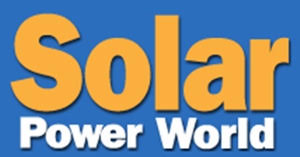Big steel goes big solar
A deal between Xcel Energy and steelmaker EVRAZ includes the building of a 240 MW solar project near the company’s Rocky Mountain Steel mill in Pueblo, Colorado. This is by far the largest behind-the-meter solar project pv magazine staff has heard of to date.
When we reference behind-the-meter solar, we are inevitably talking mostly about rooftop solar. This is either solar on homes, typically in the 3-10 kilowatt range, or on businesses, which can get up to the megawatt range for particularly large facilities like warehouses.
However, yesterday Xcel Energy and steel maker EVRAZ signed a deal which includes a solar project that could redefine the scope of behind-the-meter solar. The long-term electricity contract will feature the construction of a 240 MW solar plant on EVRAZ’s property in Pueblo near the Rocky Mountain Steel plant.
While the exact design is not known at this time, with the kinds of PV modules typically deployed at large-scale plants in the 300-420 watt range, this means as many as 800,000 solar panels. However, unlike other solar projects of this scale, Xcel filings suggest that this one will feed Rocky Mountain Steel directly and will be under the state’s net metering statute.
This is more than an order of magnitude larger than the largest net-metered solar facility that pv magazine has heard of to date. Many states have limits on the capacity of projects that can qualify for net metering, but in Colorado this is expressed as a percentage of the customer’s demand, leaving open the possibility of enormous projects for large electricity consumers.
Xcel has described the project as “key” to the deal, and it is apparent that the solar plant is not only groundbreaking for its scale as a behind-the-meter project, but is also enabling heavy industry to remain and expand in Colorado. [Emphasis added]
“We saw a great opportunity to retain a valued customer, assist in its expansion in one of southern Colorado’s premier communities, and increase use of cleaner energy,” said Alice Jackson, president, Xcel Energy—Colorado in a statement. “Working together, we found an innovative approach to expanding renewable energy that benefits not only EVRAZ, but all our customers.”
Rocky Mountain Steel makes steel for rails, seamless pipes and wire rods, and as part of the deal EVRAZ has committed to not only continue production at the site, but to further invest in hot-rolling operations by 2024.
This could be the largest factor in this deal. While Xcel notes that the project has been structured to provide economic benefits for both EVRAZ and its other customers, it has also stated that “retaining EVRAZ ultimately benefits all (Xcel Colorado) customers as remaining customers avoid cost increases associated with the departure of the largest customer on the (Xcel Colorado) system. “
This is unlikely to be the last such project. pv magazine has documented the increasing rate of corporate adoption of solar and wind, and on-site projects can offer greater economic benefits than off-site procurement. A recent study by Centrica Business Solutions found that among 1,000 global businesses, roughly one-quarter had already invested in on-site solar and/or combined heat and power, with the vast majority of businesses expecting this trend to increase over the next seven years.
The deal between EVRAZ and Xcel is subject to regulatory approval, and is a main component of the utility’s Colorado Energy Plan Portfolio (CEPP), the latest plan that Xcel has submitted to the Colorado Public Utilities Commission. CEPP involves adding 700 MW of solar, 1,100 MW of wind and 275 MW of battery storage paired with solar by 2026, as well as accelerating the retirement of the first two units at the company’s coal-fired Comanche Power Station.

This in turn would allow renewable energy to represent around 53% of the electricity generation on Xcel Colorado’s system, which the utility says will also be less expensive than previous plans.









![A crew installs solar panels on the roof of Mayflower Congregational Church UCC in Oklahoma City in 2016. State officials are working on issues that could expand the technology's use within Oklahoma. [hoto by Chris Landsberger, The Oklahoman Archives]](http://cdn2.newsok.biz/cache/large960_blur-edb3225ffc5ce673d8b9c9be02fdf9b3.jpg)



